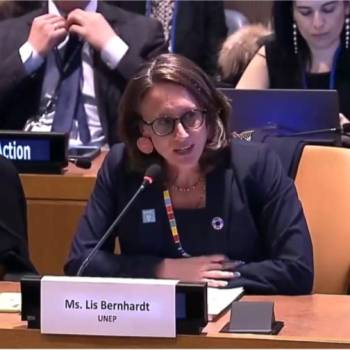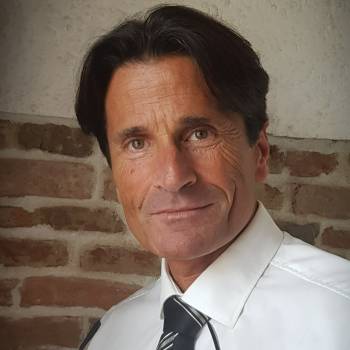
What the mining, oil and gas industries can learn from Sudbury, the city that has grown from being a big polluter to being a model of a prosperous environment
When Prime Minister Justin Trudeau met Swedish environmental activist Greta Thunberg in Montreal two years ago, he pledged to plant two billion trees by 2030 to help Canada meet its goal of net zero emissions. But planting trees is hard work. It takes money and a very good organization. Yet establishing a re-greening roadmap is possible. Sudbury, the largest city in Northern Ontario, is proof of that. It has brought about a radical transformation after decades of environmental devastation caused by the mining industry. Efforts that could serve as an example for industries like oil and gas to fight climate change more effectively.
For nearly 100 years, Sudbury's community and environment have been covered with sulfur dioxide and metals released from the smelting of nickel ore leaving a devastated nature and environment. Sulfur acidified soils, rain and lakes. The pollution triggered the complete loss of vegetation, leading to the proliferation of barren hills of blackened rock. It was a landscape of desolation
But 40 years ago, scientists, citizens, governments and mining companies in Sudbury set a goal that no matter how damaged the environment was, it was worth trying to fix it. Since then, programs led by the city and local industry have planted 12 million trees and revitalized more than 3,400 hectares of land. People now swim and fish in the 330 lakes within the city limits that were once very acidic.
Today, Sudbury looks the purest in all of Ontario. It's hard to believe considering that the city has already emitted 2.5 million tonnes of sulfur dioxide per year. In the 1980s, “Sudbury” became known for its very high level of pollution. Even to the point of becoming a sort of unit of measurement, and of comparison for other industrial cities. Today it is the other way around. The city has gained new letters of nobility: those of regained air quality. Proof that it is always possible to make an environment healthier than when we inherited it. Proof, too, that on a much larger scale, we can improve our climate.
In the face of the realities of climate change, industrial pollution and urban expansion, stories of saving and restoring the environment are rare. But a healthy environment should not come at the expense of industrial activity. As scientists developed solutions to restore land and water, industry rethought its processes to reduce and capture its emissions. Sudbury mining companies, Inco and Falconbridge (now Vale and Glencore) have led the way in reducing sulfur dioxide releases from their smelters. Nickel production continued to grow despite tighter pollution limits. The situation in Sudbury played a central role in the negotiations between Canada and the United States that led to the signing of the Air Quality Agreement between the United States and Canada in 1991. The agreement, also known as the acid rain agreement, helped solve the biggest environmental problems of the time.
Without strong policies in North America and Europe, acid rain would have continued to threaten forests and fisheries in Canada and the United States.
Now, 30 years later, we can use the same approach with strict emissions regulations, scientific evidence and solutions, and industrial reorientation to capture carbon dioxide emissions and make the major strides needed to achieve climate change targets.
However, the city of Sudbury has not solved all of its problems. it still carries a legacy of millions of tonnes of reactive mining waste, which can release acids and metals that can contaminate food webs and drinking water. These must be managed by industry to avoid impacting the environment and surrounding communities. Vale and Glencore are once again working with scientists to develop new ways of treating, capping and restoring these vast tailings ponds. They are looking for ways to turn these lands into carbon capture areas, grow biofuels, or use the land for renewable energy installations.
In some cases, this waste still contains low levels of metals that could not be extracted in the smelter. But now we have the means to capture these metals through low-energy technologies or by using bacteria to extract metals from minerals. Global demand for critical metals like nickel, cobalt and copper is increasing to support the production of electric vehicles. Over the next 25 years, the world will need as much copper as has been mined in the past 500 years, according to Rio Tinto, one of the world's largest metallurgical and mining companies. Part of this demand can be met by using waste. We cannot meet climate change goals without moving away from fossil fuels, but we cannot produce renewable energy technologies like batteries and solar panels without extracting the minerals used to make them. We cannot let one set of environmental problems replace another. But we don't have to, and Sudbury's history shows the way. Community, government, academia and industry can work together to tackle a daunting challenge like climate change. We need to focus on scientific solutions and move away from the old ways of doing things because “that's how it's always been done”.
Zero net emission and zero waste mining is possible - and necessary. They are ultimately part of a sustainable energy future. As the United Nations' decade of ecosystem restoration begins, the Sudbury model is a valuable recipe for climate change. Where we once sacrificed the environment in the name of industrial expansion, we now need to shift to smarter industrial processes to protect the environment, wean ourselves off fossil fuels, and build a more resilient global community in the face of climate change.
Sources : Mirarco
For more than 20 years, MIRARCO has been a leader in the development and deployment of innovative solutions meeting the needs of the mining industry. The Ontario-based company in Canada works with industry, private sector, government, academia and community stakeholders; an essential asset to ensure an effective transfer of knowledge, technology and sustainable practices.
Posted on 2021-08-30 16:04








Comments